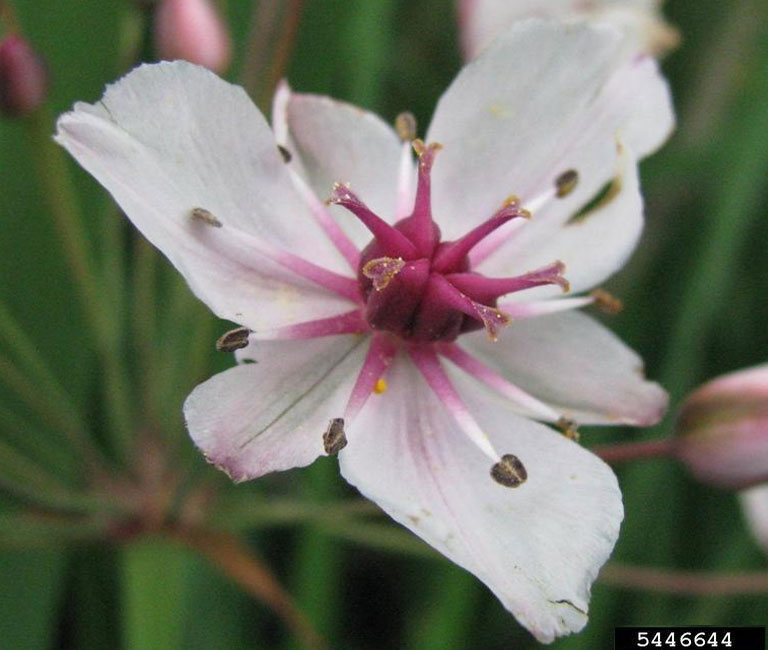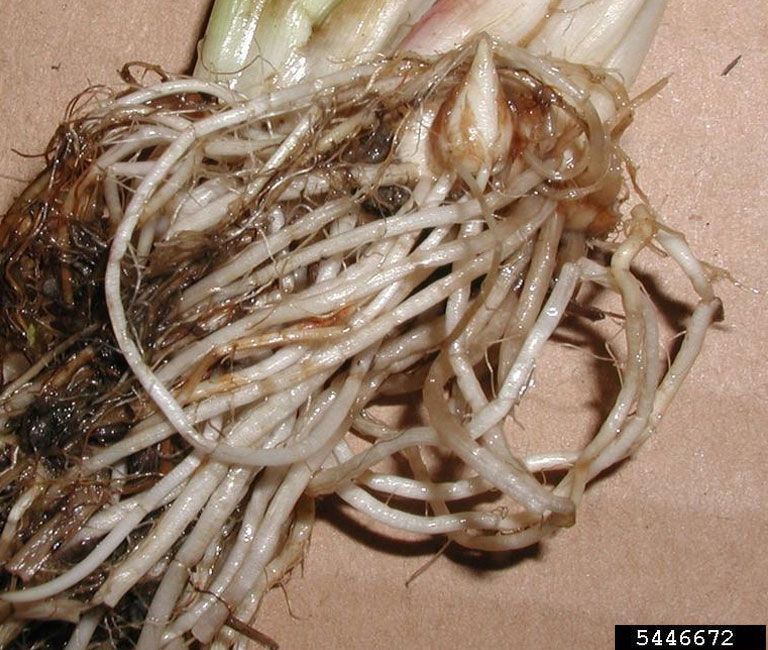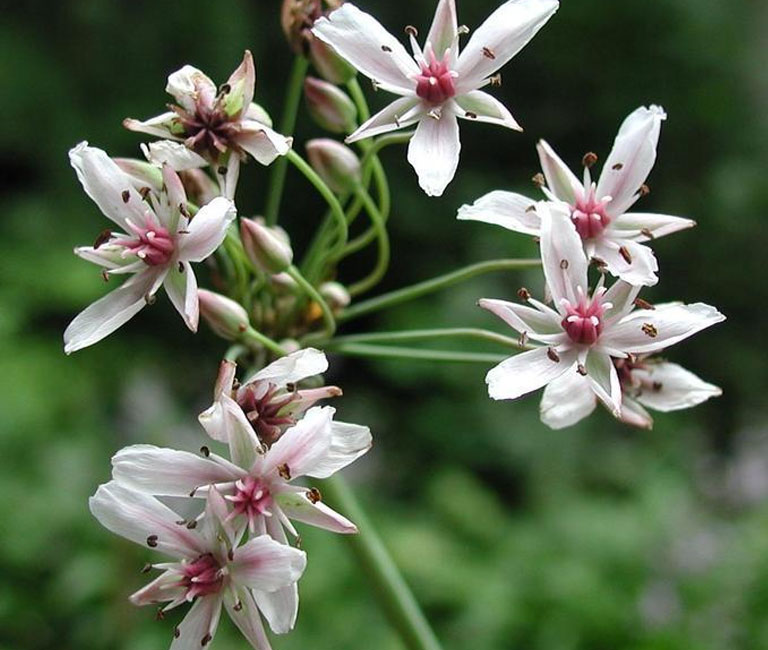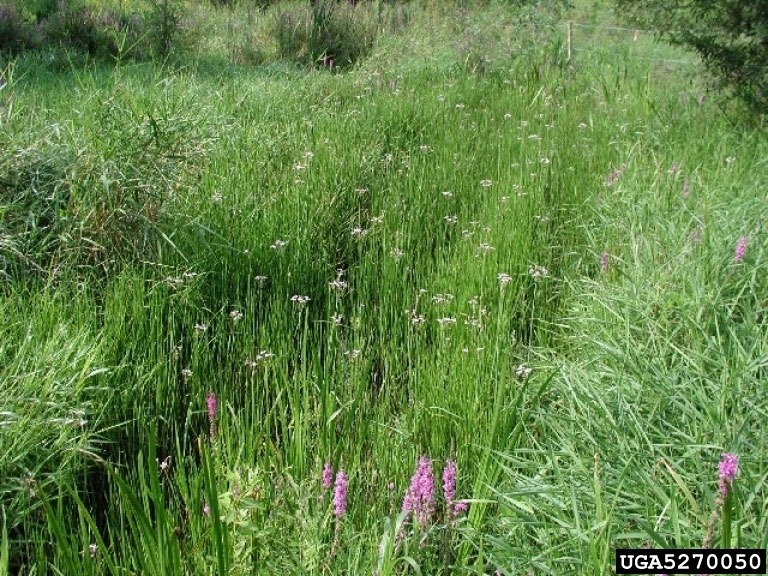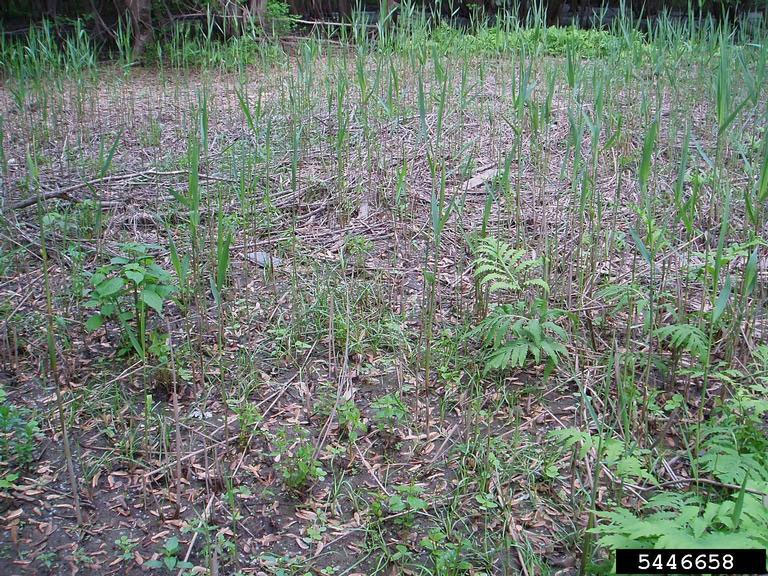Flowering rush is a reed-like wetland plant with pink flowers. Its leaves are tall, extend from the roots, and are dark green in color. Leaves have a triangular cross-section and tend to twist near the tip. Populations in the eastern United States produce seeds, but only one Minnesota population in Forest Lake (Washington County) is known to produce viable seeds. All other flowering rush populations in Minnesota are sterile and reproduce by vegetative spread and not by seeds.
Flowering rush is native to Europe and Western Asia. The first discovery in North America was in the St. Lawrence River in 1897. The species was unintentionally introduced into the United States’ Great Lakes through the discharge of contaminated cargo ship ballast water. The species was commonly imported and sold by the water garden trade, leading to the potential for illegal release into the wild. Flowering rush was first confirmed in Minnesota in 1968.
Flowering Rush grows along shoreland areas and produces a dense growth making it difficult to access the open water. It outcompetes with native aquatic plants, but provides unsuitable shelter, food, and nesting habitat for native animals.
It is found in central Minnesota, and in Wright County in Maple Lake and Granite Lake, and in Stearns County in the Sauk River.



